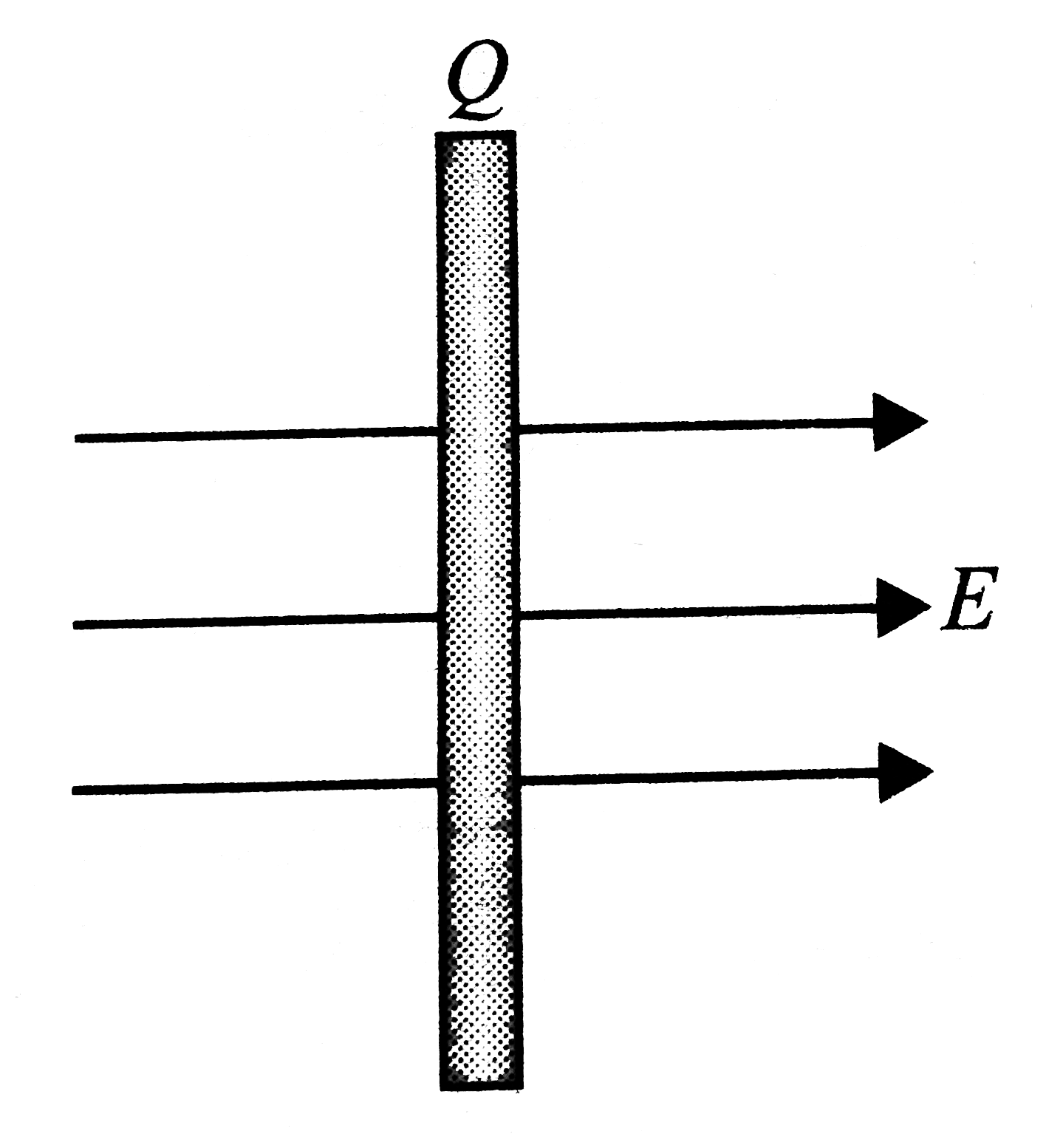An electron having charge 'e' and mass 'm' is moving a uniform electric field E. Its acceleration will be
e2m
E2em
eEm
mEe
The correct Answer is:c
To find the acceleration of an electron moving in a uniform electric field, we can follow these steps:
1. Identify the Given Quantities:
- Charge of the electron, q=−e (the negative sign indicates that it is an electron).
- Mass of the electron, m.
- Uniform electric field, E.
2. Determine the Force Acting on the Electron:
- The force F acting on a charged particle in an electric field is given by the formula:
F=qE
- Substituting the charge of the electron:
F=−eE
- The negative sign indicates that the force is in the opposite direction of the electric field.
3. Apply Newton's Second Law:
- According to Newton's second law, the relationship between force, mass, and acceleration is given by:
F=ma
- Here, a is the acceleration of the electron.
4. Set Up the Equation:
- From the force equation, we can equate the two expressions for force:
−eE=ma
5. Solve for Acceleration:
- Rearranging the equation to solve for acceleration a:
a=−eEm
- The negative sign indicates that the acceleration is in the direction opposite to the electric field.
6. Final Result:
- The acceleration of the electron in the uniform electric field is:
a=eEm
- (We can drop the negative sign when discussing magnitude).
- Charge of the electron, q=−e (the negative sign indicates that it is an electron).
- Mass of the electron, m.
- Uniform electric field, E.
- The force F acting on a charged particle in an electric field is given by the formula:
F=qE
- Substituting the charge of the electron:
F=−eE
- The negative sign indicates that the force is in the opposite direction of the electric field.
- According to Newton's second law, the relationship between force, mass, and acceleration is given by:
F=ma
- Here, a is the acceleration of the electron.
- From the force equation, we can equate the two expressions for force:
−eE=ma
- Rearranging the equation to solve for acceleration a:
a=−eEm
- The negative sign indicates that the acceleration is in the direction opposite to the electric field.
- The acceleration of the electron in the uniform electric field is:
a=eEm
- (We can drop the negative sign when discussing magnitude).
Topper's Solved these Questions
- ELECTRIC CHARGE, FIELD & FLUXBook:A2ZChapter:ELECTRIC CHARGE, FIELD & FLUXExercise:Assertion Reason
Explore 7 Videos
- ELECTRIC CHARGE, FIELD & FLUXBook:A2ZChapter:ELECTRIC CHARGE, FIELD & FLUXExercise:Section D - Chapter End Test
Explore 29 Videos
- ELECTRIC CHARGE, FIELD & FLUXBook:A2ZChapter:ELECTRIC CHARGE, FIELD & FLUXExercise:AIPMTNEET Questions
Explore 24 Videos
- DUAL NATURE OF RADIATION AND MATTERBook:A2ZChapter:DUAL NATURE OF RADIATION AND MATTERExercise:Section D - Chapter End Test
Explore 30 Videos
- ELECTRIC POTENTIAL & CAPACITANCEBook:A2ZChapter:ELECTRIC POTENTIAL & CAPACITANCEExercise:Section D - Chapter End Test
Explore 29 Videos
Similar Questions
A charged particle of charge e and mass m is moving in an electric field →E and magnetic field →B. Constant dimensionless quantities and quantities of dimention [T]−1.
View SolutionAn isolated conducting sheet of area A and carrying a charge Q is placed in a uniform electric field E, such that the electric field is perpendicular to the sheet and covers all the sheet. Find out the charges appearing on its two surfaces.

View Solution
Knowledge Check
An electron and a proton are in uniform electic field. The ratio of their acceleration will be
AZeroBUnityCRatio of masses of proton and electronDRatio of masses of electron and protonA charge of magnitude 3e and mass 2m is moving electric field →E. The acceleration imparted to the charge is
A2Ee/3mB3Ee/2mC2m/3EeD3m/2EeIf a simple pendulum has charge q and is oscillating in a uniform electric field E in the direction of acceleration due to gravity, then its frequency of oscillations
AincreasesBdecreasesCfirst increases and later on it remains constantDindependent of the effect of electric field
An electric dipole is formed by two equal and opposite charges q with separation d. The charges have same mass m. It is kept in a uniform electric field E. If it is slightly rotated from its equilibrium orientation, then its angular frequency ω is:
View SolutionAn electron of mass m and charge q is accelerated from rest in a uniform electric field of strength E the velocity acquired by it as it travels a distance l is
View SolutionAn electron of mass m and charge q is accelerated from rest in a uniform electric field of strength E. The velocity acquired by it as it travels a distance l is
View SolutionAn electron of mass m and charge q is accelerated from rest in a uniform electric field of strength E. The velocity acquired by it as it travels a distance l is
View SolutionA particle of charge +q and mass m moving under the influnce of a uniform electric field Eˆiand a uniform magnetic field Bˆk follows trajectory from P to Q as shown in figure. The velocities at P and Q vˆi and −2vˆj respectively. Which of the following statement(s) is/are correct

View Solution

